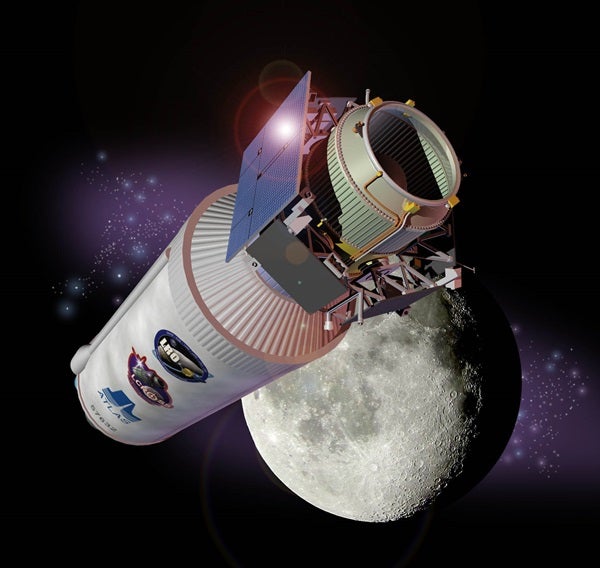Engineering teams are conducting final checkouts of the Lunar Crater Observation and Sensing Satellite, know as LCROSS, that will take a significant step forward in the search for water on the Moon.
The mission’s main objective is to confirm the presence or absence of water ice in a permanently shadowed crater near a lunar polar region. A major milestone, thermal vacuum testing of the LCROSS spacecraft, was completed June 5 at the Northrop Grumman facility in Redondo Beach, California.
To simulate the harsh conditions of space, technicians subjected the spacecraft to 13.5 days of heating and cooling cycles during which temperatures reached as high as 230° F and as low as -40°. Previous testing for the LCROSS spacecraft included acoustic vibration tests. Those tests simulated launch conditions and checked mating of connection points to the Atlas V as a secondary payload to LRO. Both spacecraft are scheduled to launch from Kennedy in late 2008.
“The spacecraft steadily has taken shape since Ames delivered the science payload in January,” says Daniel Andrews, LCROSS project manager at NASA’s Ames Research Center in Moffett Field, California. “It is a testament to the hard work, perseverance and expertise of the NASA and Northrop Grumman teams that the spacecraft has completed these critical tests ahead of schedule.”
After launch, the LCROSS spacecraft and the Atlas V’s Centaur upper stage rocket will execute a fly-by of the Moon and enter into an elongated Earth orbit to position the satellite for impact on a lunar pole. On final approach, the spacecraft and the Centaur will separate. The Centaur will strike the surface of the Moon, creating a debris plume that will rise above the surface. LCROSS will fly through the debris plume 4 minutes later, collecting and relaying data back to Earth before impacting the lunar surface and creating a second debris plume. Scientists will observe both impacts from Earth to gather additional information.










